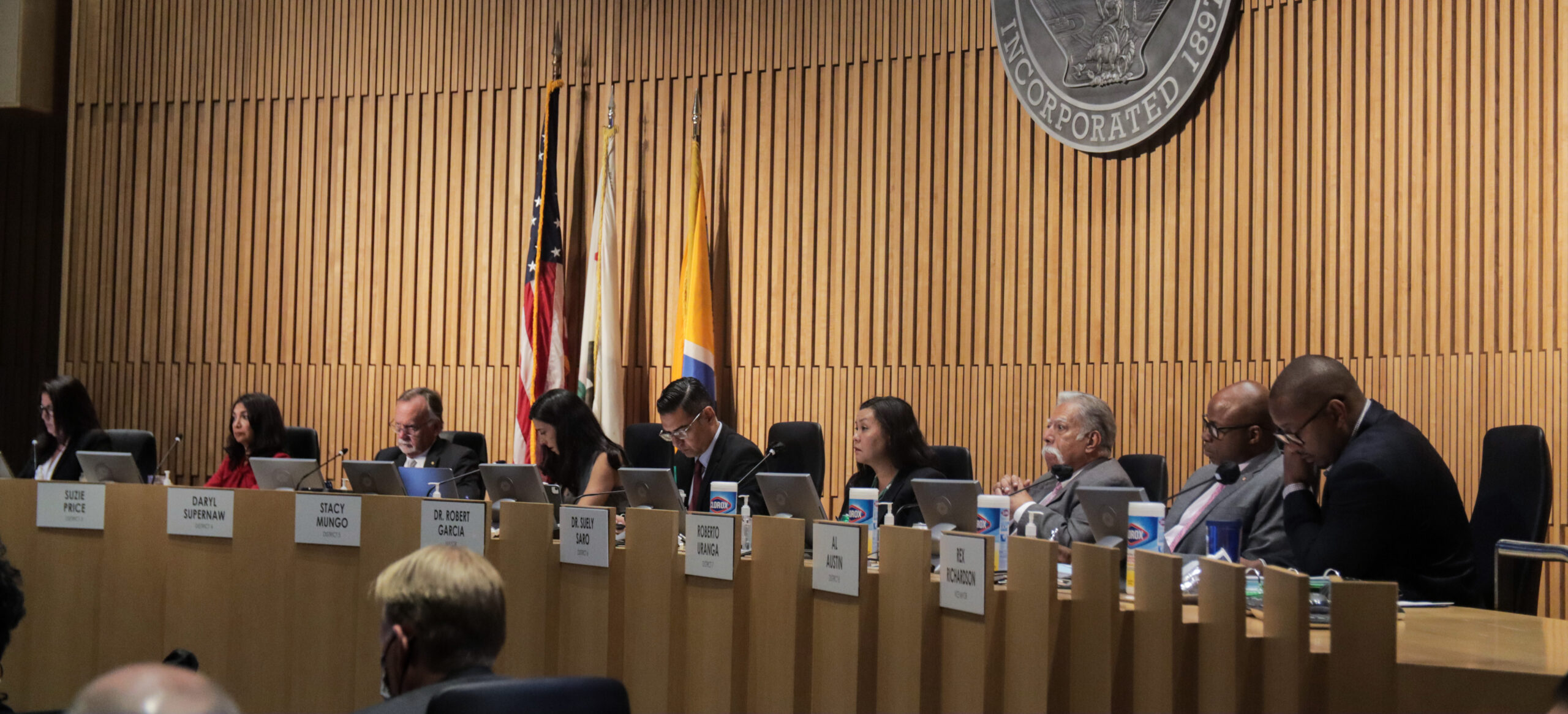With two controversial housing bills that could allow for much-needed housing construction in California headed to Governor Gavin Newsom’s desk, a trio of Long Beach City Council members would like the city to ask Newsom to veto the bills.
Council members Al Austin, Stacy Mungo Flanigan and Suzie Price signed onto a request authored by Austin that will be voted on at the City Council’s Tuesday meeting.
The request says that the two bills, Senate Bills 9 and 10, are not consistent with the city’s efforts to make appropriate zoning changes to make room for additional housing to be built, which has included public outreach.
A main criticism of the two bills is that neighbors of affected lots would have no advanced warning or recourse for expanded housing being built next door.
“I share the vision to build new affordable and workforce housing in Long Beach,” Austin wrote on Twitter this week, adding the bills should be opposed unless it exempted cities that have updated their general plans for housing. “I also support local land use plans that engage our residents.”
Long Beach has adapted zoning to allow for increased density in some parts of the city, but single-family zoned areas have largely been left out of recent zoning changes. The City Council is expected to adopt a new housing element later this year that city planners believe will create room for an additional 31,000 units by the end of the decade.
SB9 & SB10 should opposed unless amended to exempt cities that are meeting housing goals and have updated general plans by 2023. I share the vision to build new affordable and workforce housing in Long Beach. I also support local land use plans that engage our residents.
— Al Austin II (@theAlAustin) August 30, 2021
Price wrote a letter to the Long Beach state delegation opposing SB-9 earlier this year, stating that the efforts in the city have already created room for thousands of units in her district alone.
On Thursday, Price reiterated points made in her letter that Long Beach should have been at the table to present its progress in making room for future housing and that the bill should have provided exemptions for cities that are making good faith efforts to meet regional housing goals, and applied to others who have “scoffed at the intent of housing legislation.”
“For the state to take away our ability to work on these issues locally is just inconsiderate, to put it respectfully,” Price said in a text Thursday.
Newsom has not indicated if he will sign the legislation. He has until Oct. 10 to sign the legislation but faces a recall vote on Sept. 14. Even if Newsom is ousted from office he could still sign bills into law until he’s replaced by the potential next governor.
Senate Bill 9 would allow for duplexes to be built on lots currently zoned as single-family housing, and in some cases, could result in up to four units being built on one lot if it’s subdivided.
Senate Bill 10 would allow cities to zone any parcel for up to 10 units if it meets certain standards like being in a “transit-rich” corridor or on undeveloped land. It would require a two-thirds vote of the City Council to override any existing zoning rules and allow for more units to be built.
However, there is nuance to the bills that could limit their impact on Long Beach.
The council’s State Legislation Committee, of which Austin is the vice-chair, was updated with the anticipated effects of the bills being adopted by the legislature last month and city staff said they would likely be “modest.”
While there are nearly 60,000 lots in the city that are zoned for single-family homes and currently have one unit on them, the proliferation of accessory dwelling units—the city projects about 2,800 will be built by 2029—and prohibition on splitting lots that have served as rental units for the past 3 years could soften the effect of SB-9.
An amendment to SB-9 also requires that owners use one of the units as their primary residence for at least three years if they pursue a lot split.
Over 60% of the city’s residents are renters and data from the LA County Assessor’s office and Census data puts the range of single-family homes in Long Beach that are rental properties somewhere between 28% and 47%.
The presentation said there are opportunities for SB-9 to be used in Long Beach but they could largely be tied to vacant lots or larger lots, where lot splits and developing second units make more sense.
There are just over 8,900 lots in Long Beach that are more than 7,000 square feet and the development of vacant lots would be a “positive outcome” that could eliminate blight, according to the staff presentation.
The presentation said the most likely outcome might be that SB-9 allows for the creation of two larger units on a single parcel rather than a main unit and a smaller ADU, which are limited to 800-square-feet by city ordinance.
What could the end of single-family zoning mean for California’s affordable housing crisis?

